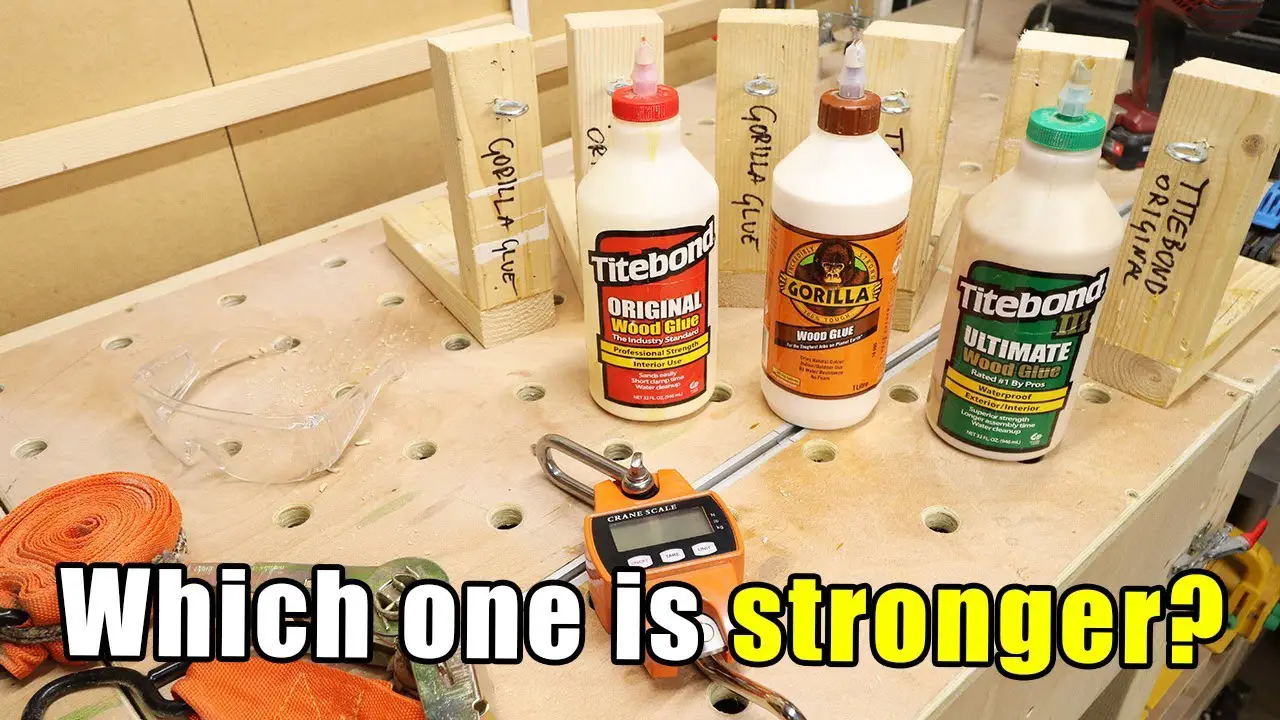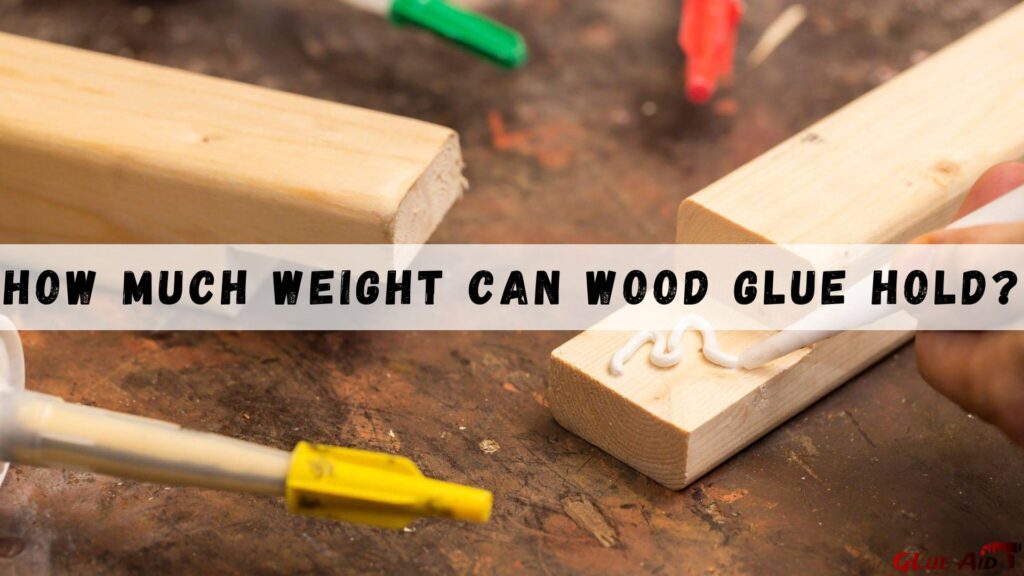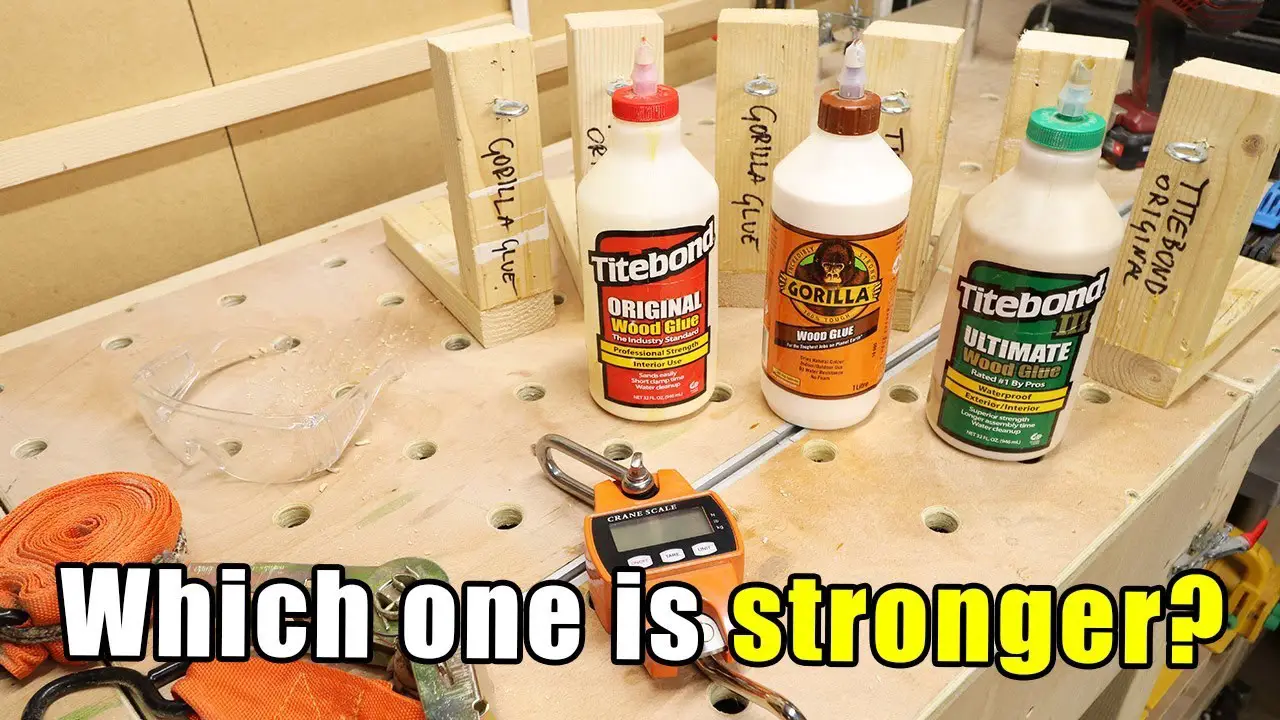Looking to dive into some woodworking projects? Well, you’ve come to the right place! So, does wood glue hold? That’s the burning question we’ll be answering today. Whether you’re a budding DIY enthusiast or a seasoned woodworker, it’s vital to know if wood glue is up to the task. Let’s delve into the world of wood glue and discover how well it really holds.
Wood glue is a powerful adhesive that can join pieces of wood together with remarkable strength and durability. From simple crafts to complex furniture creations, wood glue has become an essential tool in the woodworking arsenal. But how does it actually work? In this article, we’ll explore the different types of wood glue, their unique properties, and shed light on the factors that influence their holding ability.
Get ready to uncover the secrets behind wood glue’s impressive holding power and gain valuable insights that will help you tackle your woodworking projects with confidence. Whether you’re working on a small DIY project or constructing a masterpiece, the knowledge you’ll gain here will take your woodworking skills to the next level. So, let’s jump right in and discover the fascinating world of wood glue and its incredible holding capabilities!
- Prepare the surfaces by removing any dirt or debris.
- Apply an even layer of wood glue to one surface.
- Press the glued surfaces firmly together.
- Secure the bond with clamps while the glue dries.
- Allow the glue to cure for the recommended time before handling the project.
Using proper techniques and quality wood glue, you can achieve reliable and durable results.

Does Wood Glue Hold? The Ultimate Guide to Wood Glue Strength
Wood glue is a commonly used adhesive in woodworking projects. Whether you’re building furniture, crafting small woodwork pieces, or repairing household items, the strength and reliability of wood glue are crucial. In this comprehensive guide, we will explore the key factors that determine the holding power of wood glue and provide you with valuable insights and tips for using wood glue effectively.
The Science Behind Wood Glue
Wood glue, also known as carpenter’s glue or PVA glue (polyvinyl acetate), is a popular choice for bonding wood surfaces. When applied, wood glue forms a strong, durable bond by penetrating into the porous structure of the wood and creating adhesive bonds. This adhesive bond is achieved through a process called polymerization. Once the glue dries, the molecules in the glue create intertwining chains, resulting in a solid and firm connection between the glued surfaces.
However, the holding power of wood glue depends on various factors, such as the type of wood, the surface preparation, the adhesive’s quality, and the application technique. These factors greatly influence the overall strength and longevity of the bond.
It is important to note that wood glue is not suitable for all woodworking applications. For load-bearing joints or high-stress areas, using mechanical fasteners like screws or nails in conjunction with wood glue is recommended for maximum strength and stability.
Factors Affecting the Holding Power of Wood Glue
1. Type of Wood:
The type of wood being bonded plays a significant role in determining the strength of the adhesive bond. Hardwoods, such as oak or maple, may yield stronger bonds compared to softwoods like pine or cedar, due to their denser and less porous nature.
2. Surface Preparation:
Properly preparing the wood surfaces before applying glue is crucial for achieving strong bonds. Surfaces should be clean, free from dust, dirt, and oil. Light sanding can improve the adhesive’s ability to penetrate into the wood fibers and create a stronger bond.
3. Quality of the Glue:
The quality of the wood glue itself directly impacts its holding power. It is advisable to choose a high-quality wood glue that is specifically formulated for woodworking applications. Cheap or expired glue may have reduced holding strength and could compromise the integrity of the bond.
4. Clamping Pressure:
Applying adequate clamping pressure during the drying process is essential for ensuring a strong bond. The pressure helps the glue spread evenly and ensures intimate contact between the wood surfaces. Always follow the manufacturer’s recommendations for clamping time and pressure.
Benefits of Using Wood Glue
1. Versatility:
Wood glue is suitable for a wide range of woodworking projects, from small crafts to larger furniture pieces.
2. Aesthetics:
When used correctly, wood glue creates seamless joints without visible fasteners, enhancing the overall appearance of the finished project.
3. Strength:
Wood glue, especially in combination with mechanical fasteners, provides exceptional holding power and stability.
Wood Glue vs. Other Adhesives
While wood glue is a popular choice, other types of adhesives offer their own set of benefits and considerations:
1. Epoxy:
Epoxy offers superior strength and resistance to moisture and chemicals. It is suitable for bonding dissimilar materials and for applications requiring gap filling.
2. Cyanoacrylate (Super Glue):
Super glue provides quick bonding and is ideal for small woodworking projects that require rapid repairs.
3. Polyurethane (Foam Adhesive):
Polyurethane adhesive expands as it cures, filling gaps and providing excellent bonding strength. It is suitable for outdoor applications and bonding different materials.
Tips for Using Wood Glue Effectively
1. Choose the Right Glue:
Select a wood glue that is suitable for your specific woodworking project and follow the manufacturer’s recommendations.
2. Apply Glue Evenly:
Apply an even layer of glue on both surfaces to ensure proper adhesion. Use a brush or roller to distribute the glue evenly.
3. Use Adequate Clamping Pressure:
Apply sufficient clamping pressure to create strong bonds. Use clamps or other appropriate tools according to the size and complexity of the project.
4. Allow Sufficient Drying Time:
Follow the manufacturer’s instructions regarding drying time. It is essential to allow the glue to fully cure before subjecting the project to stress or strain.
5. Clean Up Excess Glue:
Remove any excess glue immediately using a damp cloth or scraper. Glue residue can interfere with the finishing process and affect the overall appearance.
Common Wood Glue FAQs
1. Can wood glue be used on painted or stained wood?
2. How long does wood glue take to dry?
3. Can you remove wood glue?
4. What is the shelf life of wood glue?
5. Can wood glue be used for outdoor projects?
6. Is wood glue waterproof?
7. Can wood glue be used on metal or plastic?
8. Can you mix different types of wood glue?
9. Is wood glue flammable?
10. Can wood glue be sanded?
Conclusion
Wood glue is an effective adhesive for bonding wood surfaces. With proper surface preparation and application techniques, wood glue can create strong and durable bonds in various woodworking projects. However, it is important to consider the specific requirements of your project and choose the appropriate glue type accordingly. Always follow the manufacturer’s instructions for best results. By understanding the science behind wood glue and implementing best practices, you can achieve reliable and long-lasting results in your woodworking endeavors.
Key Takeaways: Does Wood Glue Hold?
- Wood glue is designed to hold wood pieces together.
- When applied correctly, wood glue forms a strong bond between the pieces.
- It is important to choose the right type of wood glue for your project.
- Clamping the glued pieces together helps ensure a secure bond.
- Allow sufficient drying time for the wood glue to fully set and harden.
Frequently Asked Questions
When working with wood, it’s crucial to choose the right adhesive for a strong bond. Here are some common questions related to whether wood glue holds:
1. Can wood glue hold heavy objects together?
Yes, wood glue has excellent holding power and can securely join heavy objects. However, it’s essential to select the appropriate type of wood glue based on the project. Some wood glues are specifically formulated for heavier loads and provide outstanding strength. Additionally, ensuring proper surface preparation and clamping during the bonding process will further enhance the bond’s holding capacity.
For heavyweight applications, consider using a polyurethane-based wood glue or an epoxy adhesive. These types of wood glues have superior adhesive properties and can withstand considerable stress, making them highly effective in holding heavy objects together. It’s recommended to follow the manufacturer’s instructions for the specific wood glue being used.
2. Does wood glue hold in different weather conditions?
Wood glue is designed to provide reliable bonding even in various weather conditions. However, some wood glues perform better than others in extreme temperatures or humidity levels. PVA-based wood glues (also known as yellow glue) are popular and typically hold up well in normal weather conditions.
For outdoor or high-moisture applications, it’s advisable to use waterproof wood glue (also known as exterior wood glue) or a polyurethane-based adhesive. These types of wood glues are specially formulated to withstand moisture, temperature changes, and other outdoor elements, ensuring a strong bond that holds up over time.
3. Can wood glue hold different types of wood together?
Wood glue is highly effective at joining different types of wood together. Whether you’re combining softwood and hardwood or gluing together different species of wood, a good wood glue will create a strong and durable bond. The key is to ensure proper surface preparation by removing any dirt, debris, or old finishes that may hinder adhesion.
It’s important to note that the porosity and moisture content of the wood can affect the bonding strength. In some cases, applying a pre-gluing treatment, such as using wood conditioner or applying a sealant, can enhance the adhesion between different types of wood. Always refer to the manufacturer’s recommendations for the specific wood glue being used, as they may provide additional guidelines for gluing different wood types.
4. Does wood glue hold better with clamping?
Yes, using clamps during the gluing process significantly improves the strength and integrity of the bond. Clamping helps to ensure even distribution of pressure across the glued surfaces, minimizing air gaps and maximizing contact between the wood and the adhesive. It prevents the wood from shifting or moving while the glue sets and cures.
To achieve the best results, it’s important to apply an adequate amount of pressure with the clamps. This allows the wood glue to penetrate the pores of the wood, resulting in a secure and lasting bond. Always follow the recommended clamp time provided by the wood glue manufacturer, as different types of wood glue may require varying amounts of time to set and dry.
5. How long does wood glue take to dry and hold the pieces together firmly?
The drying time and the period required for wood glue to fully hold the pieces together depend on various factors, such as the type of wood glue, temperature, humidity, and the thickness and porosity of the wood being bonded. Generally, wood glues can take anywhere from 30 minutes to a few hours to set.
However, it’s crucial to allow sufficient time for the glue to cure and reach its maximum strength before subjecting the glued pieces to stress or load-bearing tasks. It’s recommended to wait at least 24 hours or follow the manufacturer’s instructions to ensure a secure bond. Keep in mind that colder temperatures and higher humidity levels may extend the drying and curing time, so it’s essential to consider the environmental conditions during the bonding process.

The Surprising TRUTH about Wood Glue
Summary
Wood glue is a strong adhesive that can hold various types of wood together. It works by penetrating the wood fibers and creating a strong bond when it dries. However, not all wood glues are the same, and some may be more effective than others.
Wood glue works best when used on clean and properly prepared surfaces. It is important to apply the glue evenly and allow enough drying time for it to fully bond the wood pieces. Additionally, different types of wood may require different types of glue, so it’s important to choose the right one for your project. Overall, with proper application and the right glue, wood glue can be a reliable and sturdy option for holding wood together.
